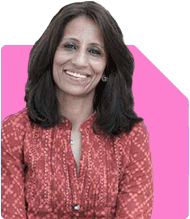Ramalingam Kalirajan |10894 Answers |Ask -Follow
Mutual Funds, Financial Planning Expert - Answered on Jul 01, 2024
He has an MBA in finance from the University of Madras and is a certified financial planner.
He is the director and chief financial planner at Holistic Investment, a Chennai-based firm that offers financial planning and wealth management advice.... more

Hi, I'm a 28-year-old B.Tech ECE graduate. I haven't been working for the past 1.1 years. I graduated in October 2019 and started my first job in 2020, working until May 2023. My last CTC was 9 LPA, but I was laid off due to the recession. Since then, I haven't taken another job, focusing instead on applying for a master's abroad and teaching myself about the stock market and finance. - **Investments**: I started SIPs in small-cap and flexi mutual funds when I began my job, initially with 2.5k. Currently, I invest 17.25k per month into these MFs. - **Living Situation**: I live with my parents, who are in business, so I don't have to pay for rent and food, covering miscellaneous costs with profits from trading stocks monthly to quarterly. - **Current Financial Status**: - Mutual Funds: 5 lakhs - Liquid cash for trading stocks and emergencies: 4 lakhs - Yearly LIC policy: 1 lakh - Health insurance: 15k yearly **Skills and Interests**: - I've been learning about the stock market and finance on my own. - I've maintained consistent investments despite being laid off. - Interested in the fintech space and entrepreneurship. **Career Goals**: - To start a company and sell it, retaining 100 crores in ownership (though I realize this might be unrealistic). - Alternatively, to achieve a job path that allows me to accumulate 25 crores by the time I'm 45 years old. - I want to get married by 32 and retire by 45. **Dilemma**: - My father advises me to pursue an MBA in India, but I'm more interested in entering the fintech space or starting my own business in that area. - I'm unsure whether it's too late to start a venture or if I should consider starting after completing an MBA. - Seeking guidance on the best path to achieve my financial and career goals. **Questions**: - Should I pursue an MBA in India as my father suggests, or focus directly on fintech and entrepreneurship? - Is it too late to start a venture at this point in my career? - Would it be more beneficial to start a business after obtaining an MBA? - How can I align my career goals with my personal goals of getting married by 32 and retiring by 45?
Financial Analysis and Investments
You've been diligent in your savings and investments. Your current investment strategy, focusing on small-cap and flexi mutual funds, is a good start. Small-cap funds have the potential for high growth, though they come with higher risk. Flexi funds offer the flexibility to shift between different market capitalizations based on market conditions, which balances risk and reward. With Rs. 5 lakhs in mutual funds and a systematic investment plan (SIP) of Rs. 17.25k monthly, you're building a solid financial base.
Keeping Rs. 4 lakhs in liquid cash for trading and emergencies is a smart move. It ensures you have liquidity for unforeseen expenses and trading opportunities. Your yearly contributions to LIC and health insurance reflect a prudent approach to risk management.
However, while your LIC policy provides a safety net, it's worth reviewing if the returns align with your financial goals. Traditional LIC policies often have lower returns compared to mutual funds. You might consider redirecting these funds into high-performing mutual funds for better growth. Consulting with a Certified Financial Planner (CFP) could help assess the benefits of retaining or surrendering the LIC policy.
Career and Education Choices
Your interest in fintech and entrepreneurship is exciting and promising. The fintech sector is booming, with ample opportunities for innovation and growth. Whether you choose to start a business or pursue an MBA, aligning your career path with your passion for fintech could lead to fulfilling and financially rewarding opportunities.
Pursuing an MBA in India:
An MBA can provide valuable skills and networks, particularly if you aim to climb the corporate ladder or start a business. MBA programs offer insights into management, finance, and strategy, which are crucial for any entrepreneurial venture. Additionally, Indian B-schools are becoming increasingly recognized globally, providing a solid foundation for leadership roles.
Your father’s suggestion to pursue an MBA in India is worth considering. It can open doors to various career paths and provide a safety net if entrepreneurship doesn't pan out immediately. An MBA could also enhance your credibility in the fintech space, making it easier to attract investors and partners for your venture.
Focusing on Fintech and Entrepreneurship:
On the other hand, directly diving into fintech or starting your own business can be exhilarating. Given your background in electronics and communication engineering (ECE), you already have a technical edge. Combining this with your self-taught knowledge in finance, you could position yourself uniquely in the fintech domain.
Starting a venture now allows you to leverage your current knowledge and passion. It's not too late to start a business; many successful entrepreneurs begin their journeys later in life. The key is to research thoroughly, understand the market, and build a robust business plan. If you’re inclined towards this path, seeking mentorship from experienced fintech entrepreneurs and networking in the industry can provide invaluable insights.
Balancing Personal and Financial Goals
Your aim to get married by 32 and retire by 45 are significant life goals that need careful financial planning. Balancing these with your career aspirations requires a strategic approach.
Marriage by 32:
Marriage involves both emotional and financial readiness. Setting aside savings for wedding expenses and future family needs is essential. Continue building your emergency fund and investments to ensure you have a cushion for any life events.
Retirement by 45:
Early retirement requires substantial financial resources. Given your goal to accumulate Rs. 25 crores by 45, you’ll need to focus on high-growth investment options. Your current SIPs in mutual funds are a good start, but diversifying into sectors with high growth potential is crucial. Consulting a CFP can help tailor an investment plan that aligns with your retirement goals.
To achieve these objectives, consider increasing your investment contributions as your income grows. Balancing aggressive investments in your early career with more conservative options as you near retirement can provide a steady growth trajectory.
Evaluating Your Path Forward
1. MBA Before Entrepreneurship:
An MBA could provide a strong foundation and networks essential for a successful startup. Many MBA programs offer entrepreneurship tracks and incubators that support budding entrepreneurs. This route offers the advantage of structured learning and a buffer period to refine your business idea.
2. Direct Entrepreneurship:
If you’re passionate and ready, starting your business now allows you to capitalize on your current momentum. The fintech industry thrives on innovation and agility, and entering the market early can position you ahead of competitors. However, this path requires thorough market research and risk management.
Crafting a Fintech Strategy
If you decide to dive into fintech, here’s a roadmap to guide your venture:
1. Market Research:
Understand the current trends and gaps in the fintech market. Look into areas like digital payments, blockchain, robo-advisory, and insurtech. Identifying a niche can provide a competitive edge.
2. Build a Network:
Connect with professionals and mentors in the fintech space. Joining industry groups and attending fintech events can provide valuable contacts and insights.
3. Develop a Business Plan:
Create a detailed business plan outlining your vision, target market, financial projections, and growth strategy. This plan will be crucial for attracting investors and guiding your business.
4. Secure Funding:
Explore various funding options, from bootstrapping and angel investors to venture capital. Understanding the pros and cons of each can help you choose the best fit for your startup.
5. Focus on Innovation:
In the rapidly evolving fintech landscape, staying ahead requires continuous innovation. Invest in technology and stay updated with industry advancements to keep your business competitive.
Financial Planning for Entrepreneurship
Starting a business requires careful financial planning. Here’s how you can prepare:
1. Emergency Fund:
Ensure you have a robust emergency fund to cover personal and business expenses for at least 6-12 months. This provides a safety net while your business stabilizes.
2. Diversify Investments:
While focusing on your venture, continue diversifying your personal investments. This provides financial security and mitigates risks associated with entrepreneurship.
3. Manage Debt:
Keep personal and business debts under control. High debt can strain your finances and hinder business growth. Prioritize paying off any high-interest loans before diving into your startup.
4. Consult a CFP:
A CFP can help create a financial plan that aligns with your entrepreneurial goals. They can provide insights into balancing personal and business finances effectively.
Final Insights
Your aspirations to venture into fintech and achieve significant financial goals by 45 are ambitious and achievable with the right approach. Balancing your career and personal goals requires strategic planning and flexibility. Whether you choose to pursue an MBA or dive directly into entrepreneurship, aligning your actions with your long-term objectives is crucial.
If you decide to pursue an MBA, select a program that offers robust support for entrepreneurship. If you lean towards starting a business now, ensure you have a solid plan and financial cushion. In either case, continuous learning and adapting to market changes will be key to your success.
Your journey is a marathon, not a sprint. Take one step at a time, and remember that persistence and resilience are as important as your strategic decisions.
Best Regards,
K. Ramalingam, MBA, CFP,
Chief Financial Planner,
www.holisticinvestment.in
You may like to see similar questions and answers below
Ramalingam Kalirajan |10894 Answers |Ask -Follow
Mutual Funds, Financial Planning Expert - Answered on May 19, 2024
Milind Vadjikar | Answer |Ask -Follow
Insurance, Stocks, MF, PF Expert - Answered on Feb 27, 2025
Ramalingam Kalirajan |10894 Answers |Ask -Follow
Mutual Funds, Financial Planning Expert - Answered on May 28, 2025
Ramalingam Kalirajan |10894 Answers |Ask -Follow
Mutual Funds, Financial Planning Expert - Answered on Aug 19, 2025
Radheshyam Zanwar |6747 Answers |Ask -Follow
MHT-CET, IIT-JEE, NEET-UG Expert - Answered on Dec 16, 2025
Shalini Singh |181 Answers |Ask -Follow
Dating Coach - Answered on Dec 16, 2025
Patrick Dsouza |1429 Answers |Ask -Follow
CAT, XAT, CMAT, CET Expert - Answered on Dec 16, 2025
Nayagam P P |10858 Answers |Ask -Follow
Career Counsellor - Answered on Dec 16, 2025
Nayagam P P |10858 Answers |Ask -Follow
Career Counsellor - Answered on Dec 16, 2025
Samraat Jadhav |2510 Answers |Ask -Follow
Stock Market Expert - Answered on Dec 16, 2025
Samraat Jadhav |2510 Answers |Ask -Follow
Stock Market Expert - Answered on Dec 16, 2025
Nayagam P P |10858 Answers |Ask -Follow
Career Counsellor - Answered on Dec 16, 2025
Nayagam P P |10858 Answers |Ask -Follow
Career Counsellor - Answered on Dec 16, 2025
Ramalingam Kalirajan |10894 Answers |Ask -Follow
Mutual Funds, Financial Planning Expert - Answered on Dec 16, 2025
























